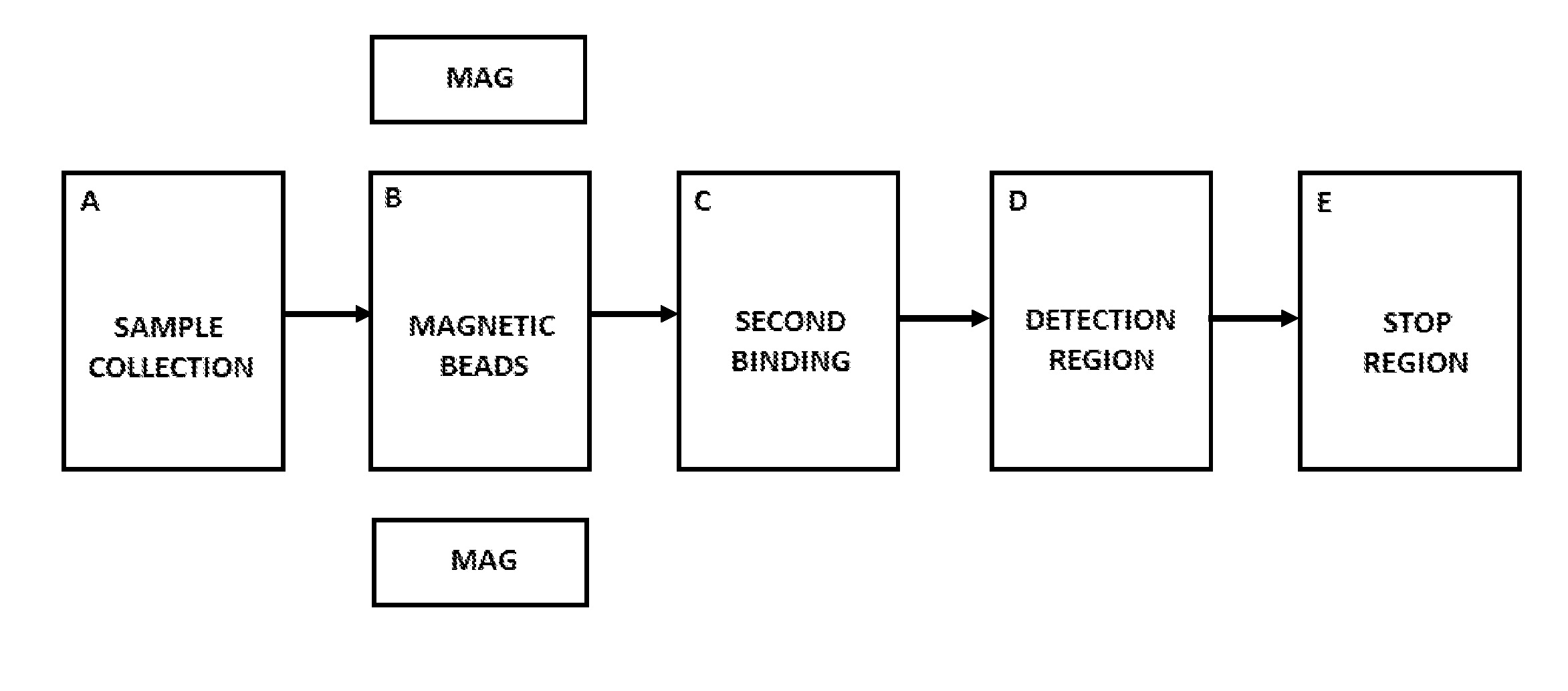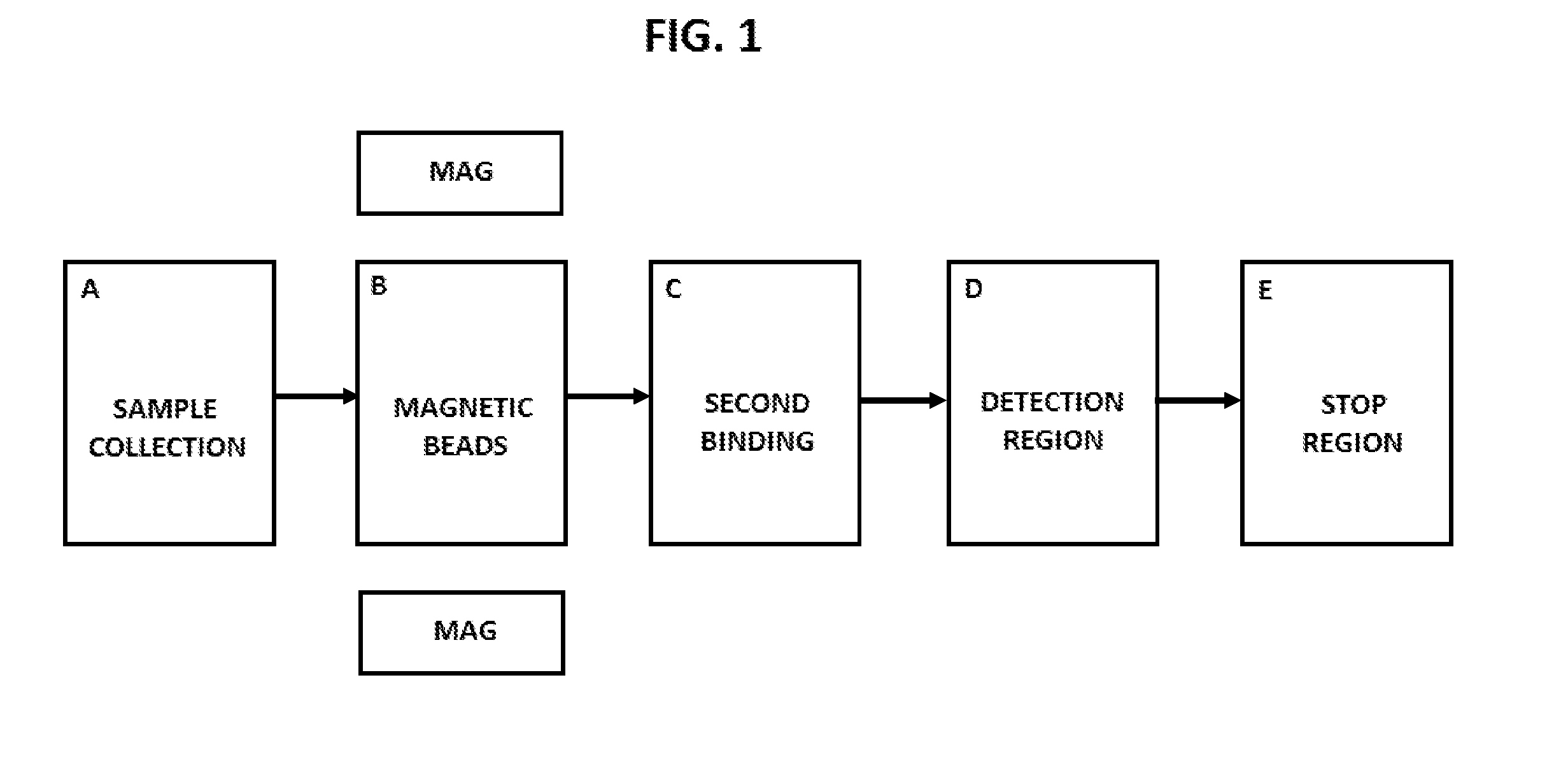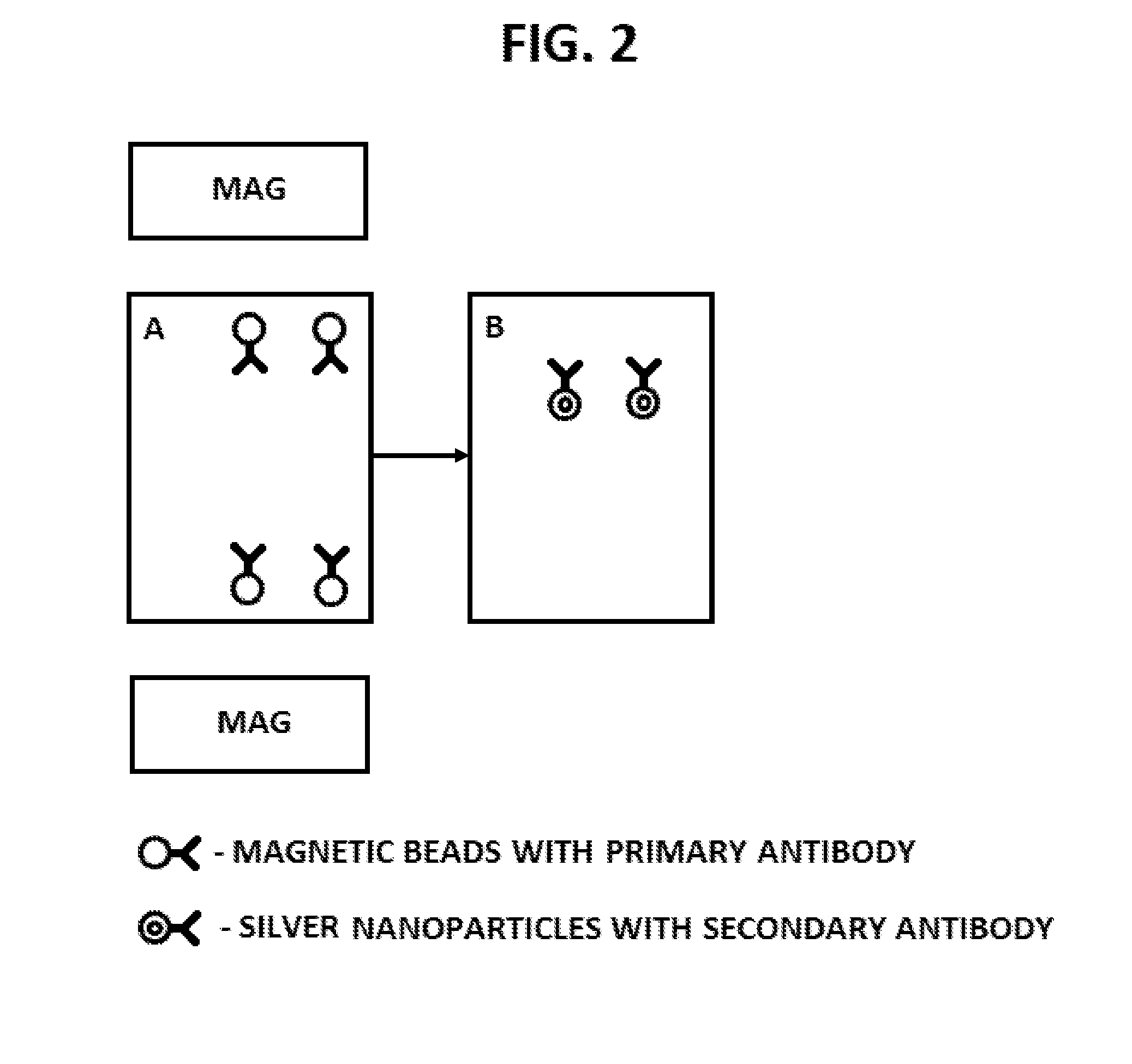Discontinuous fluidic systems for point-of-care analyte measurement
a fluidic system and analyte technology, applied in the field of analyte detection, can solve the problems of increasing affecting the detection accuracy of analyte, so as to increase the time and complexity of the operation, and improve the sensitivity of the detection.
- Summary
- Abstract
- Description
- Claims
- Application Information
AI Technical Summary
Benefits of technology
Problems solved by technology
Method used
Image
Examples
Embodiment Construction
is given below.
[0025]In one embodiment, there is a method of detecting and quantifying the amount of analyte in a solution using particles that are moved under the influence of an external magnetic field across different regions of a device. In a specific embodiment, the particles are coated with one or more binding agents. In some cases, the binding agents are antibodies that specifically bind to the analyte being detected. In particular embodiments, one of the regions inside the device comprises nanoparticles in suspension coated with a second variety of antibodies (detecting antibodies), which also bind to the analyte, and a third region that contains a detecting chemical, all the regions being separated from one another. In particular cases, the nanoparticles in the second region are made of silver and the detecting region comprises hydrogen peroxide. In certain aspects, the detecting region comprises a dye, such as one whose bleaching under the influence of decomposing hydrogen...
PUM
| Property | Measurement | Unit |
|---|---|---|
| diameter | aaaaa | aaaaa |
| internal diameter | aaaaa | aaaaa |
| magnetic field | aaaaa | aaaaa |
Abstract
Description
Claims
Application Information
 Login to View More
Login to View More - R&D
- Intellectual Property
- Life Sciences
- Materials
- Tech Scout
- Unparalleled Data Quality
- Higher Quality Content
- 60% Fewer Hallucinations
Browse by: Latest US Patents, China's latest patents, Technical Efficacy Thesaurus, Application Domain, Technology Topic, Popular Technical Reports.
© 2025 PatSnap. All rights reserved.Legal|Privacy policy|Modern Slavery Act Transparency Statement|Sitemap|About US| Contact US: help@patsnap.com



